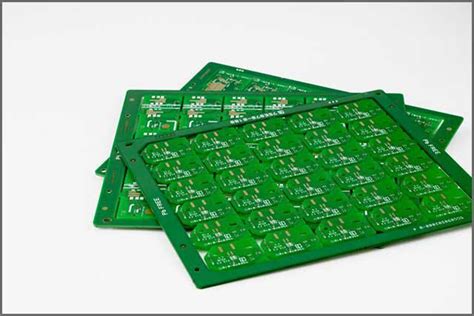What is HASL?
HASL is a surface finish that involves dipping the PCB into a molten solder bath and then using hot air to level the surface. This process creates a thin layer of solder on the exposed copper pads, providing protection against oxidation and ensuring good solderability.
Advantages of HASL
- Cost-effective
- Excellent solderability
- Good thermal shock resistance
- Suitable for through-hole components
Disadvantages of HASL
- Uneven surface finish
- Potential for solder bridges
- Not suitable for fine-pitch components
- Limited shelf life
What is ENIG?
ENIG is a surface finish that involves depositing a thin layer of electroless nickel followed by a layer of immersion gold on the exposed copper pads. The nickel layer provides a barrier against copper diffusion, while the gold layer protects the nickel from oxidation and ensures good solderability.
Advantages of ENIG
- Flat and uniform surface finish
- Excellent solderability
- Long shelf life
- Suitable for fine-pitch components
- Good corrosion resistance
Disadvantages of ENIG
- Higher cost compared to HASL
- Potential for black pad formation
- Requires strict process control
10 Tips on How to Choose ENIG Plating
-
Consider your budget: ENIG is generally more expensive than HASL, so consider your budget constraints when making a decision.
-
Evaluate your component requirements: If you’re using fine-pitch components or have high-density designs, ENIG is the better choice due to its flat and uniform surface finish.
-
Assess your shelf life needs: ENIG has a longer shelf life compared to HASL, making it suitable for applications that require extended storage periods.
-
Consider your soldering process: ENIG is compatible with a wide range of soldering processes, including reflow, wave, and hand soldering.
-
Evaluate your environmental requirements: ENIG provides good corrosion resistance, making it suitable for applications exposed to harsh environments.
-
Assess your reliability needs: ENIG offers excellent thermal shock resistance and good bond strength, ensuring reliable performance in demanding applications.
-
Consider your rework requirements: ENIG allows for easier rework compared to HASL, as the flat surface finish facilitates component removal and replacement.
-
Evaluate your supplier’s capabilities: Ensure that your chosen PCB supplier has the necessary expertise and equipment to produce high-quality ENIG finishes.
-
Consider your testing requirements: ENIG is suitable for in-circuit testing and boundary scan testing, as the flat surface finish enables reliable contact with test probes.
-
Assess your overall product requirements: Consider factors such as your product’s intended use, expected lifespan, and performance requirements when choosing between HASL and ENIG.

HASL vs ENIG Comparison Table
| Characteristic | HASL | ENIG |
|---|---|---|
| Cost | Low | High |
| Surface Finish | Uneven | Flat and uniform |
| Solderability | Excellent | Excellent |
| Shelf Life | Limited | Long |
| Fine-Pitch Compatibility | Poor | Excellent |
| Corrosion Resistance | Good | Excellent |
| Thermal Shock Resistance | Good | Excellent |
| Rework Compatibility | Difficult | Easy |
Frequently Asked Questions (FAQ)
-
Q: What is the main difference between HASL and ENIG?
A: The main difference between HASL and ENIG is the surface finish. HASL produces an uneven surface finish, while ENIG provides a flat and uniform surface finish. -
Q: Which surface finish is more cost-effective, HASL or ENIG?
A: HASL is generally more cost-effective compared to ENIG, as the process is simpler and requires fewer materials. -
Q: Is ENIG suitable for fine-pitch components?
A: Yes, ENIG is suitable for fine-pitch components due to its flat and uniform surface finish, which enables accurate component placement. -
Q: Does ENIG provide better corrosion resistance than HASL?
A: Yes, ENIG provides better corrosion resistance compared to HASL, thanks to the protective nickel and gold layers. -
Q: Which surface finish has a longer shelf life, HASL or ENIG?
A: ENIG has a longer shelf life compared to HASL, as the gold layer protects the nickel from oxidation, ensuring good solderability over extended periods.
Conclusion
Choosing between HASL and ENIG for your PCB surface finish depends on various factors, including your budget, component requirements, shelf life needs, and environmental considerations. By assessing your specific requirements and following the 10 tips provided in this article, you can make an informed decision when selecting ENIG plating for your PCB. Remember to consider your overall product requirements and work with a reliable PCB supplier to ensure the best results for your application.






Leave a Reply